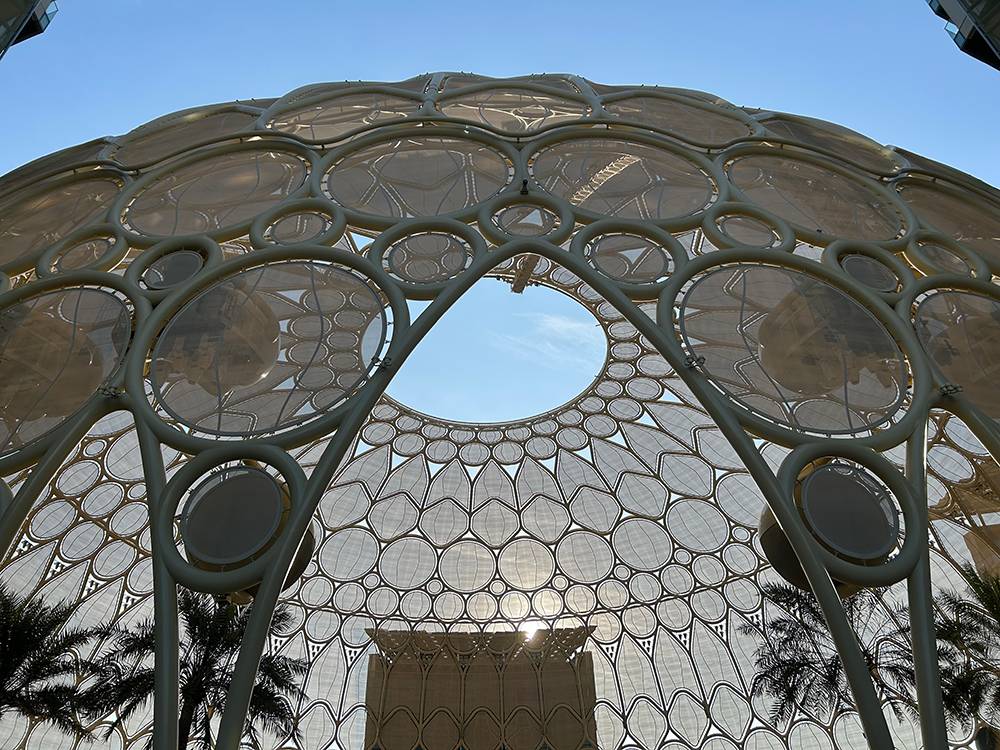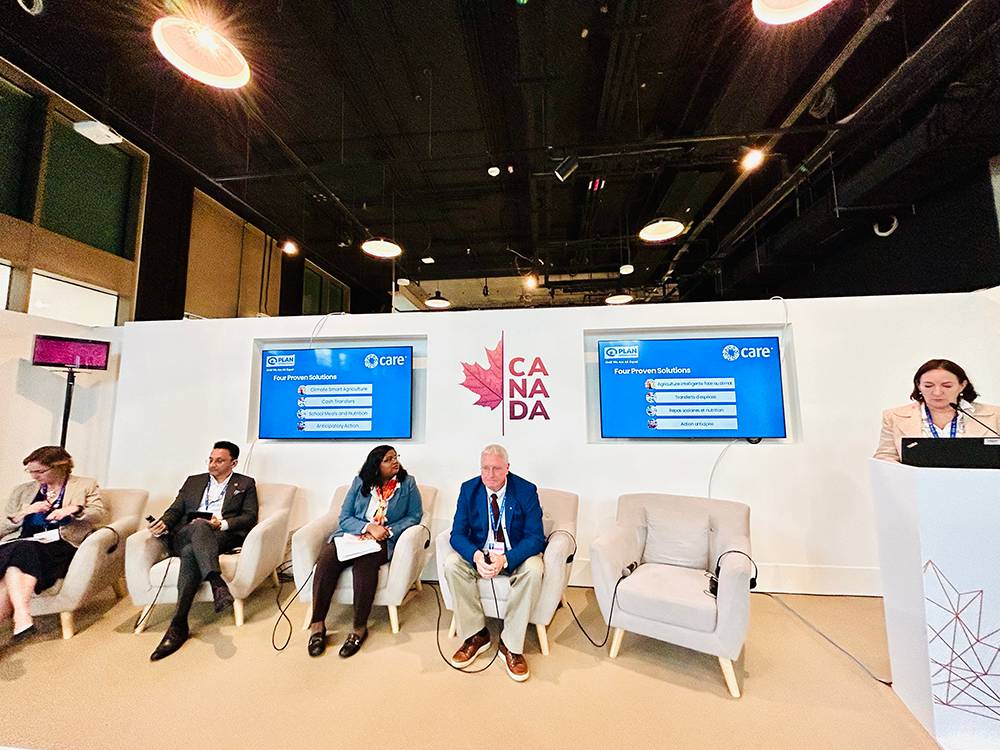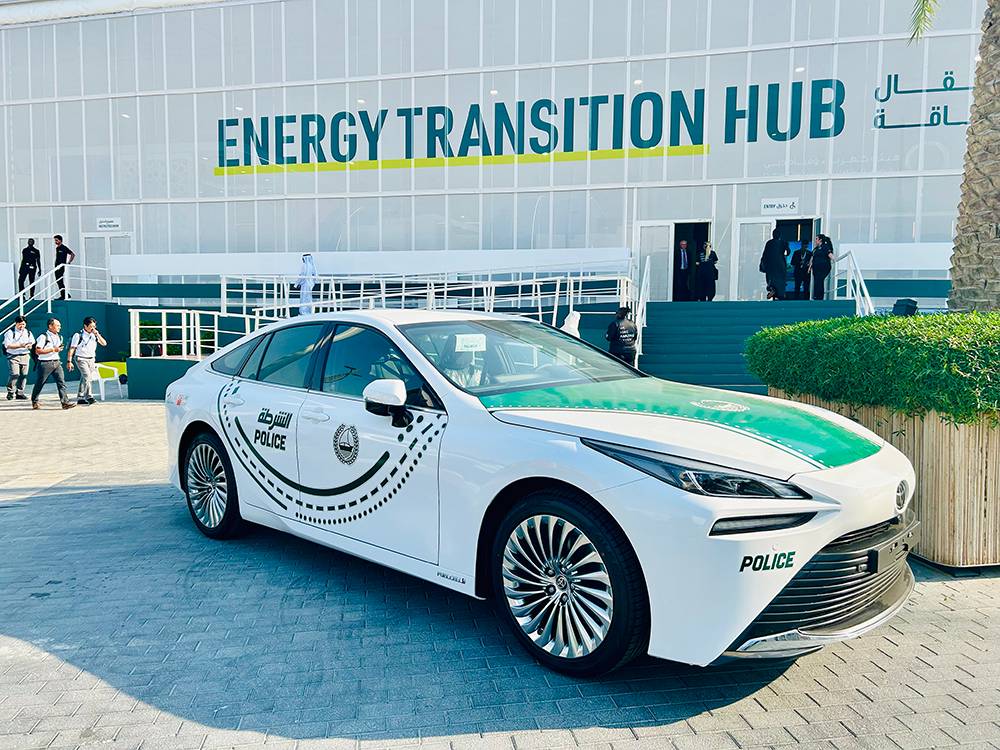The business COP. The oil COP. The pragmatic COP. The sellout COP. There were almost as many labels thrown at COP28 as there were people (100,000) at the climate conference in Dubai. But one thing’s for sure: the annual UN gathering may never be the same. There were electric bikes and scooters to ferry people around the vast Dubai Expo site, retractable outdoor shades to protect them from the sun and acres of indoor trade show pavilions showcasing everything the Middle East is doing in the new economy. And in the end, there was a remarkable, if flawed, agreement to push the world away from fossil fuels.
Did the end of the oil age just happen in one of the world’s wealthiest oil cities? Or was this more diplomatic show than strategic will? Either way, the 28th Conference of the Parties to the UN climate agreement will be seen as a turning point in climate diplomacy. Perhaps a midlife crisis. Perhaps a coming of age. Here are some of the trends I spotted:
- 1
Climate Action Is Now Big Business
Dubai was a good metaphor for the COP conundrum, with a can-do business culture focussed on Net Zero. The host United Arab Emirates made no apologies for a business-focused conference, placing it in a massive trade park that normally houses some of the world’s biggest festivals of capitalism. Hundreds of global CEOs, mega-investors and 2,500 lobbyists attended, turning COP into a climate version of Davos. Many of the business leaders spent more time at lavish side conferences and events in Dubai’s celebrated swanky hotels, where US$37 billion in commitments were announced, including US$7 billion for climate-smart food systems. Inside the conference, the hosts seemed to use every available facility to showcase their own approach to climate action with multimedia displays, working robots and creative zones that gave a Vegas vibe. Climate de Soleil, anyone?

- 2
It’s A Long Way From Paris
While the ink is still drying on the final communique, COP28 will likely be remembered as the fork in the road that started in Paris in 2015. Back then, COP21 was all about ambition as the world pledged to cut greenhouse gas emissions significantly and quickly enough to prevent catastrophic climate impacts. Progress from Paris has been patchy, as was reflected in a “stocktake” exercise at Dubai. The conference’s theme—Unite, Act, Deliver—spoke to a more pragmatic tone that may soon see the world concede that the Paris goals that were updated at COP26 in Glasgow may not be possible, at least not in the time given. This COP was not without promise. Critically, more than 150 countries, including Canada, and 50 big oil and gas companies signed a pledge to cut methane (a potent greenhouse gas) by 75% by 2030. They added US$1 billion in commitments to make that happen. If they deliver, Dubai will be remembered as the springboard to action.
- 3
It’s About The Oil, Stupid
The COP host, Sultan Al Jaber, also runs UAE’s main oil and gas company, and is a serious player in OPEC. So it was a big deal when he kicked off the conference with a commitment from 50 oil majors, representing 40% of global production, to decarbonize by 2050, and then ended the conference with the first commitment ever by the world to transition away from fossil fuels. The when, where and how of that remain unresolved, but COP28 drew a line in the sand. For UAE, which produces 3 million barrels a day and plans to increase that, the ultimately unsuccessful push by many nations for “a phasing out” of fossil fuels was awkward. Its much bigger neighbour, Saudi Arabia, did everything to keep the conference from demonizing oil, while the U.S. danced delicately around the fact that it’s now the world’s leading producer. China and India, which dominate coal production, kept their voices down, too. Despite the diplomatic pledges: fossil fuels still account for 80% of the world’s energy consumption, only a tad lower from 82% in the 1990s. An expected surge in U.S. LNG exports in 2026 will only add to that stress, as will Asia’s 5,000 coal plants that continue to grow.
- 4
No, It’s About Renewables
One strong sentiment at COP28 was around the irreversible rise of renewables. The conference committed to tripling renewables by 2030 while doubling energy efficiency. Wind and solar can be seen everywhere in the UAE, which fancies itself as a renewables powerhouse. Green hydrogen was also the talk of the conference. That’s the hydrogen created by wind or solar power and usually converted into ammonia to be shipped to energy-hungry markets. The big prize in the near term is maritime shipping, which is quickly shifting from diesel to ammonia to comply with new international shipping standards. And heavy industry—think German steel—is actively searching for hydrogen solutions. Who will be the big supplier? The Saudis and Chinese are working together across Asia to establish an early grip, while the U.S. is considering a more ambitious hydrogen export strategy. With the right incentives to compete with fossil fuels, Texas hydrogen could be the Sino-Saudi alliance’s biggest rival. And then there’s Canada, with proposals in Newfoundland, Nova Scotia and Quebec. A green hydrogen race is on.
- 5
Or Is It About The Mix?
Energy security is not a popular expression at COP, but it’s clearly top of mind for the Biden administration. Yes, John Kerry still gets most of the podium time at these conferences, with his Al Gore-inspired jabs at Big Oil. But away from the mic, other officials laid out a more pragmatic view rooted in national security. They don’t want to be dependent on a single supplier of anything, which means the U.S. and its allies will need to produce a wider array of energy, even if that costs the economy a bit more. That could include a lot more nuclear: 20 countries, including Canada, came to COP to commit to tripling nuclear production by 2050. That will require 100 gigawatts of extra nuclear power—10 times current levels—to get to Net Zero. China is another nuclear energy power aspiring to lead, with 22 plants now in development, while the U.S. is starting to talk up nuclear fusion as a game changer. The appetite for “all of the above” seems undiminished.
- 6
The Great Game, Circa 2050
You didn’t have to wander far from the negotiating hall to get a sense of a world divided. Major oil producers, including Iran, were quiet, while Russia remained a largely unwelcome player, despite its status as an energy powerhouse. India, a giant coal producer, laid low. So, too, did Britain, with its government back home dialling back climate commitments. As for the world’s poorest countries, which suffer the brunt of climate change, the growing anger is palpable. Once again, it was up to China to be the swing power. Beijing hosted the second largest pavilion, after Saudi Arabia, using it to host (among others) African nations vying for Beijing’s ag tech. The Chinese and Saudis showed off their green hydrogen ambitions. The Asian superpower even made an effort to look cooperative with the U.S., as their special envoys, John Kerry and Xie Zhenhua, worked together to salvage an agreement for Dubai. The two men are linchpins of the global climate movement, and both are expected to retire next year. But the most concerning name for the COP crowd — Donald Trump — wasn’t there. Should Trump, who pulled the U.S. out of UN climate talks, return to the White House, all Dubai bets are off.
- 7

The Federal-Provincial Pavilion Divide
Canada played an outsized role at this COP. Climate change minister Steven Guilbeault, who’s been to all 28 COPs, chaired the efforts to get a final agreement on fossil fuels, and continued to push other countries to adopt carbon pricing. His government also used the conference to unveil its proposed emissions cap for oil and gas—a first for any oil producer (Canada is the world’s fourth largest). But if Guilbeault, a former environmental activist, has enjoyed a place in the sun at most COPs, he encountered a few new clouds in Dubai. Two conservative premiers, Danielle Smith (Alberta) and Scott Moe (Saskatchewan), came to COP to advocate for a different kind of climate policy. Both represent provinces whose economies depend on heavy emitting industries, and missed no opportunity to stress why the world will need oil and gas for more years than COP-tavists might wish. The two provinces hosted their own pavilions away from the official zone, to create a platform for energy, agriculture and Indigenous voices that didn’t get as much airtime at the federal pavilion.
- 8
Building Blocks That Are Built To Last
Where better to talk about a buildings revolution than Dubai? The city was a global backwater when the COP movement started; today, it’s a mini-Manhattan with ambitions to be even bigger. The glass-and-steel skyline is a visual feast, and an air-conditioning frenzy. It also reflects what the world may see over the next 25 years, as the built environment is expected to double. That’s a concern because construction accounts for 38 billion tonnes of carbon emissions, accounting for 40% of the world’s challenge to get to Net Zero. Lots being done about it. The open-air Dubai Expo showcased offsite construction technologies, electric building machines, and new materials that reduce a building’s carbon footprint. The large number of cities now represented at COP also brought demonstrations of recycled steel and carbon capture for cement manufacturing. Hong Kong is among the leaders. In just three years, its construction sector has gone from 100% reliance on gas to 60% reliance on batteries. One concern for engineers: rising temperatures are forcing them to rethink everything they build, no where more than in Dubai.
- 9
Carbon Markets Get Real
Rio Tinto is one of the world’s biggest mining companies, and when it comes to climate it has a big challenge. The company won’t hit its 2025 emissions targets which means it will have to spend a lot for money — perhaps $1 billion a year — buying carbon offsets. It’s not just the money the company is struggling with, it has to compete with the likes of Google and Microsoft for a scarce number of credible offsets. The year leading up to COP28 saw a slew of offset scandals that has the carbon markets, and buyers, nervous. Some of the pressure reflects the growing pains of a new market. And some of it comes from concerted efforts by environmental activists to ensure offsets don’t become a cheap and easy way to avoid real decarbonization efforts. As emitters allocate billions more to offsets, more developers will test the market with new kinds, from nature conversation efforts to carbon removal technologies. One signal from Dubai: sustainable agriculture. The better farmers get at measuring and verifying the amount of carbon their soil captures, the more investors and corporates may want to turn to them for offsets.
- 10

COP28’s Keyword: Profitability
Where’s the money? It was an odd question to hear in the UAE, home to the world’s richest family and the highest influx of millionaires (100,000 at last count). But like many COPs, this one struggled with how to generate more capital for climate. Of the US$200 trillion in institutional investments around the world, less than 3% is allocated to the energy transition, with only US$1.1 trillion going to renewables and electrification of transportation. Many debates in Dubai came down to a single word: profit. Clean tech and other climate-oriented investments are not generating the real returns needed to attract more capital. Higher interest rates have hurt, but the bigger challenge remains underlying economic models. Climate action needs to generate revenue, and not enough business models are emerging that rely on more than subsidies and venture capital. That will need more blended finance, pooling public and private investment funds. Andrew Steer, who runs the Bezos Earth Fund, suggests we need “a deal team for the planet.” But that won’t be enough. The supply of capital will accelerate only when the demand for climate action takes off. And on that front, many ambitions from Dubai were at risk of being left in the sand until the rest of the world gets moving.
This article is intended as general information only and is not to be relied upon as constituting legal, financial or other professional advice. A professional advisor should be consulted regarding your specific situation. Information presented is believed to be factual and up-to-date but we do not guarantee its accuracy and it should not be regarded as a complete analysis of the subjects discussed. All expressions of opinion reflect the judgment of the authors as of the date of publication and are subject to change. No endorsement of any third parties or their advice, opinions, information, products or services is expressly given or implied by Royal Bank of Canada or any of its affiliates.


 Learn More
Learn More